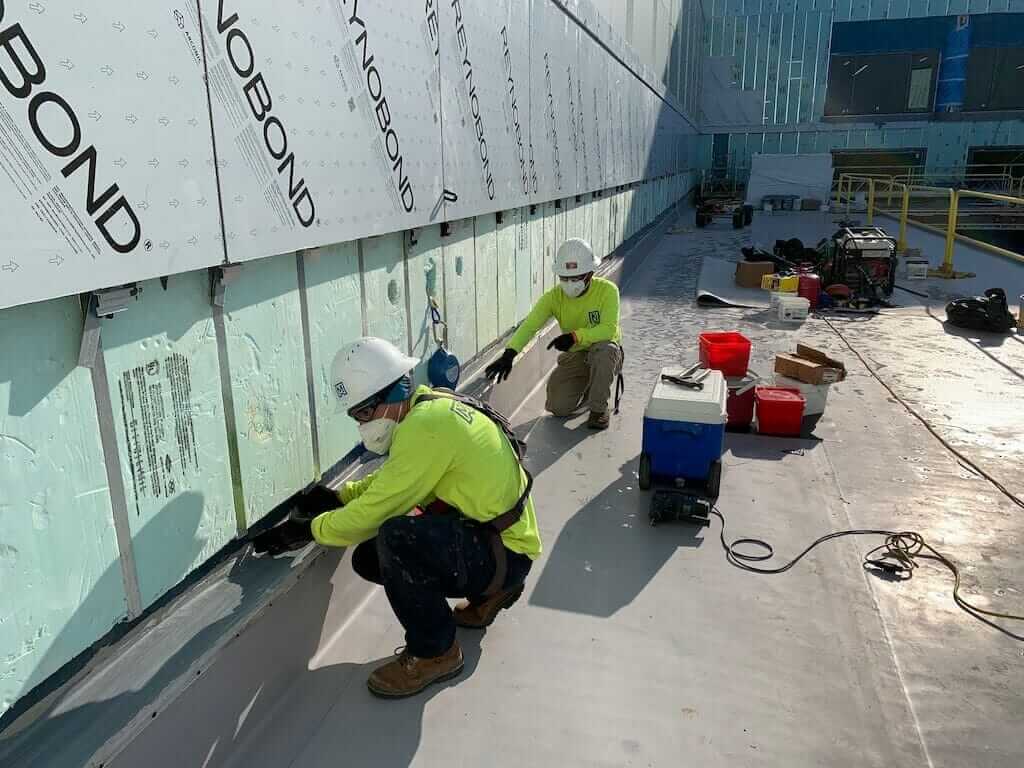Since commercial roofing is a high-risk industry, the Occupational Safety and Health Administration (OSHA) carefully regulates commercial roof systems and the work done to them. Thus, government agencies must be particularly careful about choosing companies that comply with OSHA standards.
Civic, state, and federal government agencies that are on the search for a commercial roofing company should pay attention to the OSHA standards commercial roofs must adhere to in order to ensure they are choosing a safe and reputable contractor. Here are the basic OSHA safety regulations that any roofing company should follow:
1. Fall Protection
The single most important roofing safety requirement is to provide fall protection equipment and training. In construction, OSHA requires fall protection for any employee at risk of falling more than six feet. Fall protection includes things like guardrails, toe boards, and, in certain situations, safety harnesses and ropes. Workers who will be working with fall protection equipment are also required to have job hazard training. This training should be documented and certified to prove that it was performed.
2. Eliminating Surface Hazards
OSHA requires companies to ensure that their workers have a safe surface to work on. This includes clearing roofs of slip hazards such as ice and ensuring that a roof is structurally sound enough to walk on. For government agencies that need building roof work that is structurally unsound for walking, it’s important to ensure that your roofing company has the equipment and expertise to keep their workers safe under dangerous conditions.
3. Covering Roof Holes and Impalement Hazards
Falling off a roof is not the only danger that roofers face. Buildings often have impalement hazards—or exposed construction materials or building equipment—that need to be covered while workers are on a roof. Roof penetrations like skylights also need to be covered or surrounded by guard rails to prevent workers from falling through them.
4. Keeping Work Materials Close
Climbing up and down a roof exposes workers to danger. So, to minimize risk, OSHA requires roofers to keep any construction materials they need close to where the construction is taking place on the roof.
Reputable roofing companies will already have these safety protocols in place. So, be sure to ask your contractor about their compliance with OSHA standards.
If you’re ready to find out how you can implement the proper safety protocols on your commercial roof, contact Maxwell Roofing & Sheet Metal, Inc. today! Our team is experienced and ready to help.

